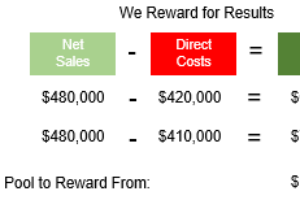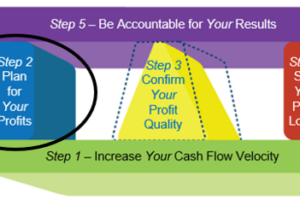
Synopsis
Use the BusinessCPR™ Accountability Ladder Tool as part of those in your employ who are struggling with accepting accountability for the results of their actions.
When those drawing a wage from you are struggling to accept accountability for the results of their actions one of the best ways to help them see what you are seeing is the BusinessCPR™ Accountability Ladder Tool. This tool is part of the BusinessCPR™ Management System, Step 5—Be Accountable for Your Results. Click here to read more about this people management practice.
The accountability ladder is a coaching and feedback tool used to reinforce behavior when results are better than planned and to provide coaching when behavior interferes with realizing desired results. Effective business owners and managers use this tool to help those they lead to understand why they are or may not be getting the desired results they want out of life or their job.
Most often, this tool is used to help trigger an informal conversation with an employee who you believe in, but is struggling. For those employees who are like a bad apple in a bushel of apples this tool is not the best tool to address this type of employee issue. Here you want to use your progressive discipline process to help you move employees who are not a good fit in your business out of your employ. Click here to learn about the BusinessCPR™ Progressive Discipline process to learn how to deal fairly and decisively with these types of employees. Read on to learn more on how to use the accountability ladder with those you want to help contribute more.
Four steps to effectively prepare yourself for using the accountability ladder with a struggling employee
- The first step in using the accountability ladder is to ask yourself where you currently are on the ladder. You do this because if you’re on one of the lower rungs on the ladder, you aren’t in the best position to coach someone on how they need to move up the ladder when you aren’t at least where you want them to be. I.e., if you aren’t modeling the desired behavior it is better to hold off using this tool until you are.
- Once you are clear on what rung of the accountability ladder you are on, the next step is to use the same process you put yourself through to help a struggling employee. Remember, this tool only works if you really want to coach those on the lower level rungs to help them see how their actions and behavior are holding them and the company back from accomplishing more. Again, if your goal isn’t to help the employee see themselves in a new light, initiate your progressive discipline process to accelerate moving them out of your business.
- Take a moment to identify any observable behaviors you see in the employee that has them on the upper rungs of the ladder to encourage them to keep it up. Be prepared to provide specific examples of what you are appreciating. Do the same thing for those behaviors that are holding them back. Again, be prepared with specific examples and suggestions on how they could improve.
- Schedule the best time to meet privately with the employee you are trying to help. Print two hard copies of the BusinessCPR™ Accountability Ladder Tool in preparation for your discussion, then have the meeting.
Eight keys to having a behavior-changing discussion with an employee you believe in
- Introduce your goal for the conversation. Point out that this is intended to be a positive conversation and that they are not in trouble. Remember, you want to help them, so tell them why you believe in them.
- Ask them what they heard to make sure they know your intention for the meeting.
- Give them a copy of the accountability ladder and speak to the opening paragraphs and different rungs on the ladder to help orient them to the tool. Ask them if they have any questions about the accountability ladder.
- Once they are clear on the ladder’s rungs, have them “circle” the number that best reflects where they see themself on the accountability ladder on their worksheet. As they do this, draw a box around the number on your copy of the tool that reflects your view of where you see them on the accountability ladder.
- The next step is to place both worksheets side-by-side to discuss your respective ratings. Use the titles and language of the rungs to help you talk with each other about your respective perceptions.
- It’s OK if you don’t see the same rung. The goal is to discuss each other’s perceptions of what’s working and what’s not for you in your role, where you might need help, and what you are prepared to do differently.
- Use the back of the accountability ladder tool to record any improvement commitments made by the employee or promises of support by you. Be clear on how they and you will know the commitments have been honored, and then do what you say you will do.
- File your copy of the accountability ladder tool with any post-meeting notes you made in the employee file. Do this should behavior not improve so that this conversation can be specifically referenced as part of the progressive discipline process.
You know you have had a healthy conversation on improving contributions when you both walk away with a shared understanding of what can be done differently to improve personal accountability for the results of your actions on yourself, the business, and those you work with.
You don’t have to do it alone …
We recognize that it’s an easy conversation when you and your employee are both on the same rung and that it’s not too bad when you are within a rung of each other. We also know it can be an awkward conversation if you believe you and the employee you want to help are likely to be more than three rungs from each other. If are putting off this third option, click here to schedule a conversation with one of our BusinessCPR™ Certified Business Coaches to learn how best to handle this type of conversation.
We are here to help …
We recognize that it's an easy conversation when you and your employee are both on the same rung and that it’s not too bad when you are within a rung of each other. We also know it can be an awkward conversation if you believe you and the employee you want to help are likely to be more than three rungs from each other. If you think this third option is a possibility, click the link below to schedule a conversation with one of our BusinessCPR™ Certified Business Coaches to learn how best to handle this type of conversation.
DOWNLOAD TOOL

